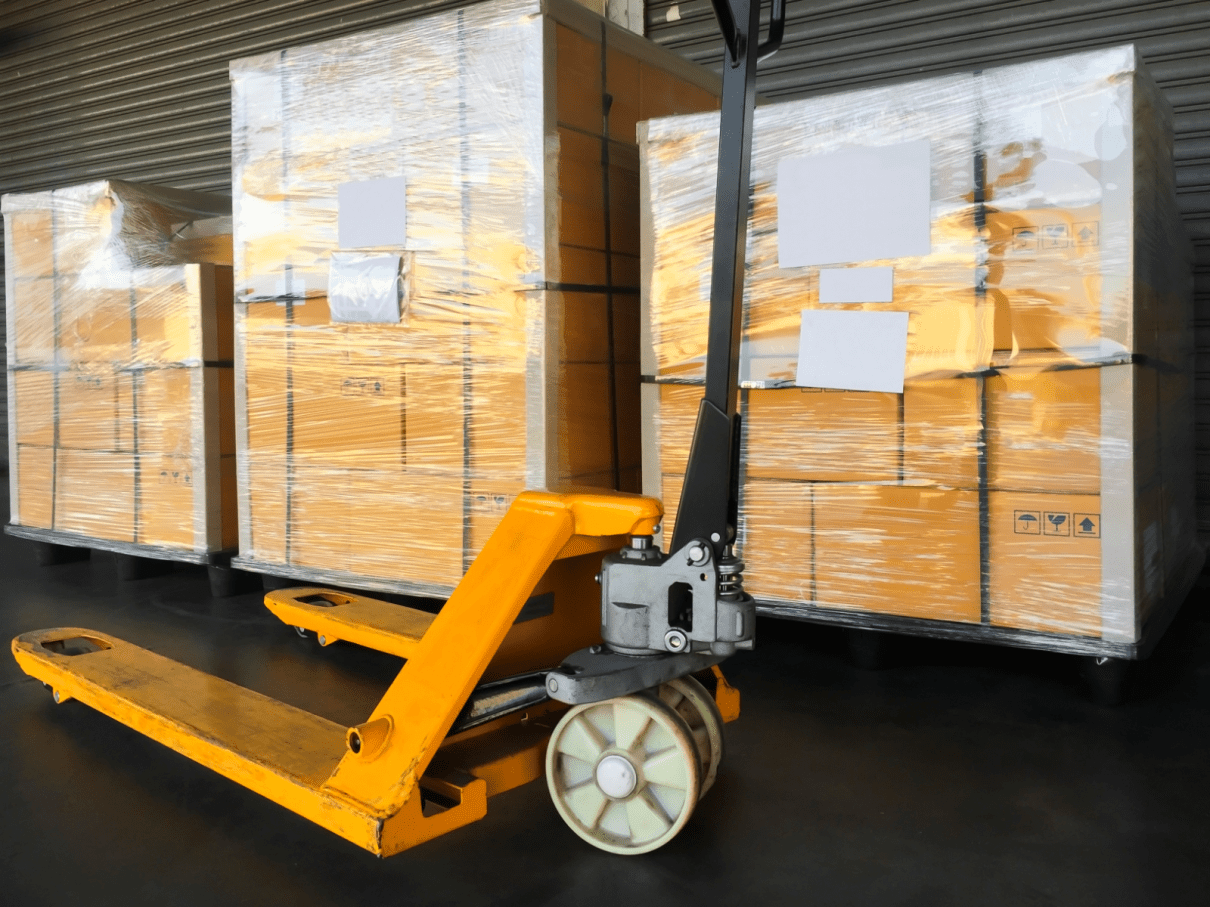Home » The Basics of Stretch Film
The Basics of Stretch Film

Stretch film is a fundamental component in packaging, crucial for securing products on pallets for safe storage and transportation. This versatile plastic wrapping material is used worldwide by businesses of every type to protect and stabilize cargo during transit and in warehouses. Understanding the different types of stretch film and their specific applications is essential for optimizing packaging operations and reducing costs.
What You Need To Know About Stretch Film
Stretch film is designed to cling tightly to items, providing a secure overwrap that protects them from dust, moisture, and movement. Let’s dive into the details of the extrusion process, types of stretch film, and practical applications to help you make an informed decision when choosing the right stretch film for your needs.
Extrusion Process
The extrusion process is crucial in stretch film manufacturing, involving the heating or compression of resin to achieve the desired viscosity. This resin is then formed into a plastic layer through either a cast or blown extrusion process.
Cast Stretch Film
Cast stretch film is produced by melting resin and pushing it through a flat die onto chilled rollers, where it solidifies. This method creates a clear, glossy film with excellent cling and quiet unwind properties.
Advantages of Cast Stretch Film:
- Good for securing pallet loads with smooth and straight edges (A and B loads).
- Transparent finish that makes it easier to see merchandise, product information, directions, and barcodes.
- Low noise when wrapping the pallets.
- Self-adhering properties.
- Available in single or double side cling (sticky).
- Medium puncture resistance.
- Easy to apply.
- Cheaper alternative compared to blown film.
Disadvantages of Cast Stretch Film
- Not as strong as blown film in holding merchandise.
- Less memory and more prone to tear than blown film.
Blown Stretch Film
Blown stretch film is made by extruding melted plastic through an annular slit die, followed by blowing the molten tube up with air to form a thin film. This process results in a film that is strong, puncture-resistant, and has a higher degree of memory.
Advantages of Blown Stretch Film:
- Good for securing pallets with pointed or sharp edges (C- loads).
- High resistant to tears and punctures
- Provides a higher carrying and holding capacity
- High level of memory once stretched
Disadvantages of Blown Stretch Film
- Makes noise when wrapping the pallets
- Not as clear as cast film
- More expensive than cast
Types of Stretch Film
Conventional Stretch Film
This is the standard film used for a variety of applications, versatile enough to handle regular load types.
Engineered Stretch Film
Engineered films are designed with advanced polymers to offer better performance with less material, ideal for reducing waste and improving load stability with less film.
Pre-stretched Stretch Film
Pre-stretched films are extended close to their ultimate break point prior to being wound onto rolls. This film is lighter and easier to apply, reducing fatigue for operators and material usage.
Application Methods
Hand Rolls
Hand rolls are used for manual application, suitable for businesses that wrap fewer than 50 pallets per day. They are portable and do not require machinery, making them accessible for smaller operations.
Machine Rolls
Machine rolls are used with automatic or semi-automatic pallet wrapping machines. These are suitable for high-volume environments, providing consistent wrapping and reducing labor costs.
Thickness and Additives
The thickness of stretch film is typically measured in gauges, with a variety of specifications available to suit different load types and handling conditions. Additives can be incorporated into the film to confer additional properties such as UV resistance, anti-static behavior, or color tinting, enhancing functionality and safety.
Hand Rolls
Machine Rolls
Film With Additives
Summary: The Importance of Choosing the Right Stretch Film
Selecting the right type of stretch film is vital for effective product protection and operational efficiency. By understanding the different types and their specific benefits, businesses can significantly reduce material waste, enhance cargo security, and optimize costs. Whether you’re wrapping a few pallets a day by hand or managing a large-scale distribution center, the appropriate stretch film can make a significant difference in your packaging operations.
For detailed advice and options on stretch films, consider reaching out to packaging experts like Brown Packaging, who can provide tailored solutions based on your specific needs and industry requirements.
Shifting packaging production from China to the U.S. can help stabilize costs, reduce tariff exposure, and shorten lead times. But the transition process requires careful
RSC boxes are known for their efficiency and versatility, but their performance ultimately comes down to strength. Buyers often see numbers like ECT, BCT, and
In packaging, foam isn’t just about initial protection — it’s about maintaining performance over the entire shipping or storage cycle. Compression set and recovery characteristics
Pouches are a go-to for flexibility and convenience, but they can fail in critical ways—from poor seals to punctures and delamination—that hurt performance and brand
In the retail environment, the placement of Point of Purchase (POP) displays is just as critical as their design and content. Strategic positioning can significantly
Choosing the right foam density isn’t about “soft” versus “hard” — it’s about controlling shock transmission and matching the foam’s cushioning curve to the product’s
Home » The Basics of Stretch Film
Tampering and theft are significant concerns for manufacturers and consumers alike. Tampered products can pose health and safety risks, while theft results in financial losses.
In the current competitive retail landscape, the packaging of a product plays an increasingly significant role in customer decision-making. Brands are progressively realizing the power
Shipping glass products can be challenging due to their fragile nature. Whether you’re shipping glass jars, bottles, or other delicate items, the packaging you choose